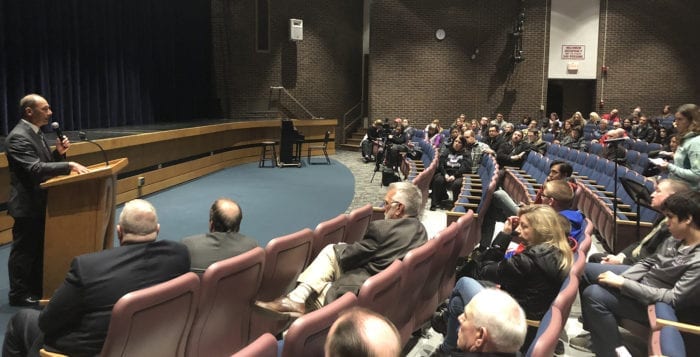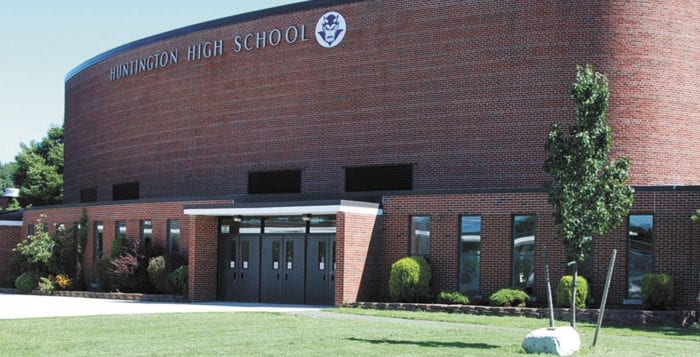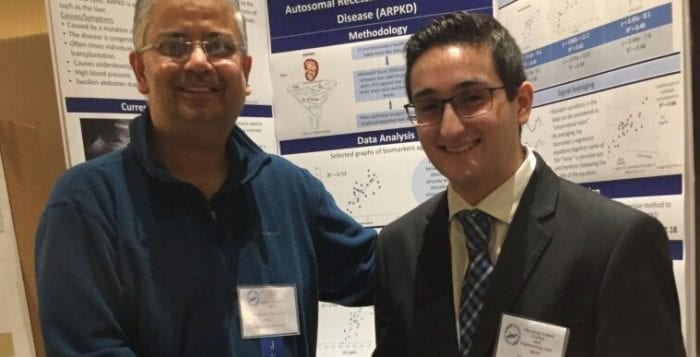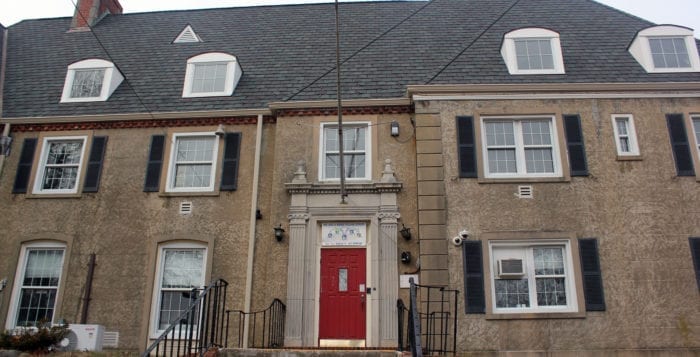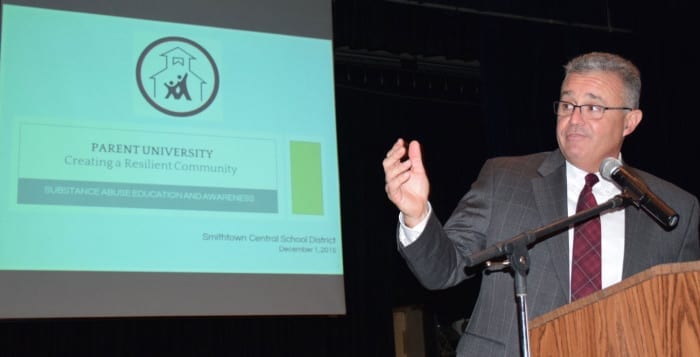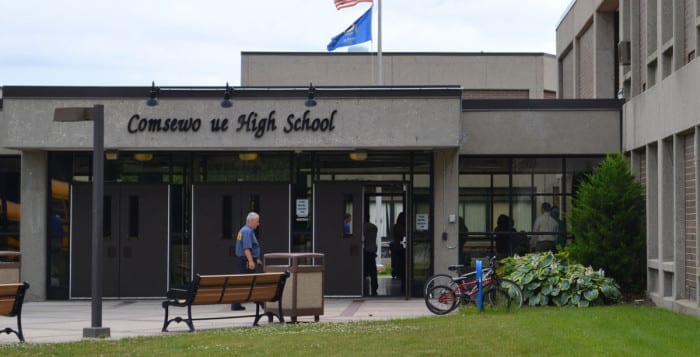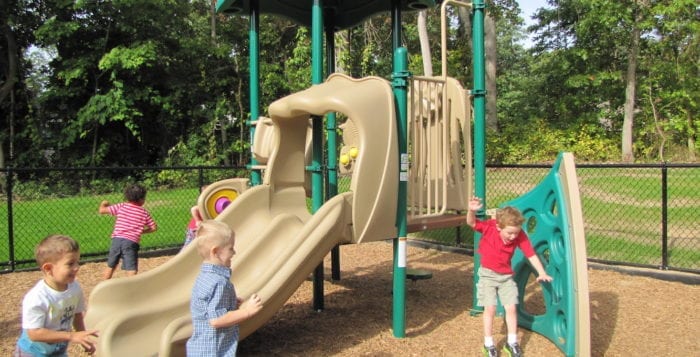School districts and communities have been forced to reflect in the days since a shooter at a high school in Parkland, Florida killed 17 people.
Port Jefferson School District’s self-examination included a look at the reaction to a social media threat by a now former student the day after the Feb. 14 Marjory Stoneman Douglas High School tragedy. Improving school safety going forward, and a give-and-take between Superintendent Paul Casciano and concerned parents, highlighted a two-hour community meeting inside a packed Port Jefferson High School auditorium Feb. 26.
Casciano shared some details about the district’s handling of the student and the threat, which played out during the final days before mid-winter recess, frequently reminding attendees that he was not at liberty to discuss many of the factors that played into the timeline.
“He doesn’t have access to weapons.”
— James Strack
He said district administration became aware of a social media post at the end of the school day Feb. 15 when two students came forward with concerns.
“Although there was no indication that there was an imminent threat to the safety of our students and staff, we take any threat of violence very seriously, and we immediately contacted the police,” the superintendent said.
He said Suffolk County Police Department’s 6th Precinct thoroughly investigated the matter into the night of Feb. 15 and most of the day Feb. 16. He said information, much of which was false, has been spread by parents and members of the community, stemming from a parent.
“Since the investigation was still in progress, I was unable to get any information at that time,” Casciano said. “I was assured that there would be a police presence at the school the next day. We were allowing the 6th Precinct to do their work. We weren’t looking to start spreading the news.”
The superintendent sent out an email to district residents just before midnight Feb. 15 to let parents know a threat had been made, a law enforcement investigation was underway and that extra precautions would be taken to ensure students and staff felt safe during the Feb. 16 school day. He said he elected not to notify parents via a prerecorded phone message because of the late hour.
“Wake us up,” several parents said in response to Casciano’s rationale behind email notification as opposed to a phone call as to not disturb families.
“Although there was no indication that there was an imminent threat to the safety of our students and staff, we take any threat of violence very seriously, and we immediately contacted the police.”
— Paul Casciano
“I think vague is better than zero,” another parent responded to Casciano’s contention that the presence of an ongoing investigation tied his hands.
Many parents said during the meeting they didn’t see the message until after they had sent their children to school, and as erroneous rumors began spreading on social media of a lockdown or evacuation, parents began pulling students out of school. Casciano sent out a second email around 1 p.m. Feb. 16 with the stated mission in part to dispel a “firestorm” of rumors on social media pages frequented by district parents. The second communication reiterated that an investigation was ongoing, which prevented the superintendent from being able to fully brief parents on the situation and that the district buildings were safe.
“Your imagination tends to run a little wild, and I think that’s part of the reason why people were looking for an answer,” one parent said of the environment in the hours after rumors began to spread. “I think it would’ve been nice to get a little articulation from you before this.”
Casciano said at the time, he was advised by the SCPD that there was no credible threat of violence, a point that was backed up by 6th Precinct Police Captain James Strack, who attended the meeting and fielded a handful of parent questions.
“He doesn’t have access to weapons,” Strack stated when asked about the status of the investigation. He said the student and his family were extremely cooperative, and none of the evidence presented to the district attorney’s office met a criminal threshold.
Casciano said he was assured the student was supervised and “receiving proper care.” The student, who is not a Port Jefferson resident, attended by paying tuition, and was not arrested following the incident. The child will not be returning, though Casciano declined to specify if the decision was entirely the district’s.
“I’d like to think it was mutual,” he said.
In addressing increased safety options for the future, the superintendent was clear about a plan being discussed across the country, including at the highest levels of the United States government.
“Teachers with guns make me nervous.”
— Paul Casciano
“Teachers with guns make me nervous,” Casciano said. The sentiment was met with applause from the attendees.
The superintendent mentioned suggestions he’d received from parents, which included arming teachers. Other proposals included installation of bullet-proof windows, enhancing the number of security personnel, conducting backpack checks or banning them altogether, adding metal detectors, arming security guards and monitoring students’ social media accounts.
Casciano also detailed some of the safety practices the district employs, including shooter drills and training for staff and students and identification checks for visitors. He also stressed the district’s commitment to mental health awareness.
One parent, Karen Sullivan, pointed to Sandy Hook Promise, a nonprofit established by relatives of victims of the shooting at Sandy Hook Elementary School in 2012, which offers support, strategies and suggestions to familiarize onself with signs that could indicate a student might be troubled.
“I recently signed up to be a promise leader,” she said. “I’ve been in contact with them over the last three or four days, and they have a slew of programs that would be free to our district. They are ready, willing and able to come here to help, and I’m offering my help and my support.”
Casciano said the district will review submitted suggestions as soon as possible while also examining the feasibility and practicality of any option before eventually submitting any further safety recommendations to the board of education.

